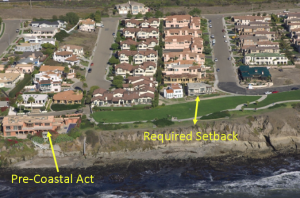Environmental justice goals and policies are coming to the general plans of California cities and counties. So what does that mean for new development projects?
Timing. The new environmental justice requirements are the product of SB 1000, which was signed into law by Governor Jerry Brown on September 24, 2016. Under SB 1000’s amendments to Government Code Section 65302, a local agency will now be required to address environmental justice issues when, on or after January 1, 2018, it concurrently adopts or revises two or more general plan elements. In those circumstances, the local agency must either adopt an environmental justice general plan element or include environmental justice goals, policies, and objectives in its existing general plan elements.
The Meaning of Environmental Justice. To better understand the environmental justice movement and the types of “EJ” provisions local agencies will be pressed to place in their general plans, it is helpful to look at the goals of the California Environmental Justice Alliance, which, along with the Sierra Club and other prominent environmental organizations, is one of the state’s strongest advocates for EJ legislation. The Alliance’s goals include assuring that all families live in healthy neighborhoods, that polluting industries are replaced by green industries, that planning priorities place people above profit, and that lower cost housing is not exposed disproportionately to sources of noise, air, and other pollution.
“Disadvantaged Communities.” Under the new law, all general plans must identify “disadvantaged communities” within their boundaries. These may be areas already identified under existing law in Cal EPA’s list of disadvantaged communities. Areas on that list are specifically targeted for the investment of funds generated by the California Air Resources Board’s cap-and-trade program for reducing greenhouse gases.
Alternatively, a “disadvantaged community” may be identified as a “low-income area” that the local agency has determined to be “disproportionately affected by environmental pollution and other hazards that can lead to negative health effects, exposure, or environmental degradation.” A “low-income area,” in turn, is an area with household incomes at or below 80% of the statewide median income or with household incomes at or below the low income threshold designated by the Department of Housing and Community Development.
SB 1000 appears to provide local agencies with considerable discretion in interpreting the boundaries of “disadvantaged communities,” which is likely to lead to different approaches to defining those boundaries throughout the state.
General Plan Requirements. So, what are the required policy considerations that these environmental justice general plan amendments must address? Pursuant to SB 1000, they must spell out objectives and policies that:
- Reduce the unique or compounded health risks in disadvantaged communities by means that include . . . the reduction of pollution exposure, including the improvement of air quality, and the promotion of public facilities, food access, safe and sanitary homes, and physical activity.
- Promote civil engagement in the public decisionmaking process.
- Prioritize improvements and programs that address the needs of disadvantaged communities.
As with the definition of “disadvantaged communities,” the interpretation of these broad policy statements is likely to lead to the implementation of the new law in vastly different ways.
Prudent Practices. Keeping in mind that all new development must be consistent with the provisions of the local general plan, landowners and developers should keep close tabs on general plan amendments implementing the new law so that their concerns are considered before the new general plan provisions are firmly in place.
In addition, developers should know exactly where their local agency stands in the process of making the required amendments. If a local agency has not timely made the required amendments, legal challenges are likely to confront projects approved when the local agency is not yet in compliance. Buyer beware: this should be a due diligence consideration when acquiring land, not merely something to address at the tail end of the entitlement process.
What the Future Holds. In the end, environmental justice issues are likely to play an increasingly significant role in all new development in California. Each local agency will approach its own EJ considerations in the context of its own political environment, its existing state of development, and its anticipated future development patterns. You should expect that some EJ general plan amendments will contain mundane and less impactful requirements, while others will contain more aggressive provisions that easily could jeopardize the viability of a project.
Given the broad, generalized requirements of the new law, and the likelihood that its provisions will be interpreted and applied in varying ways by local jurisdictions throughout the state, rest assured that the courts will play a key role in shaping the scope of environmental justice requirements throughout California. This definitely falls within the category of “Stay Tuned.”
 Lay of the Land
Lay of the Land







